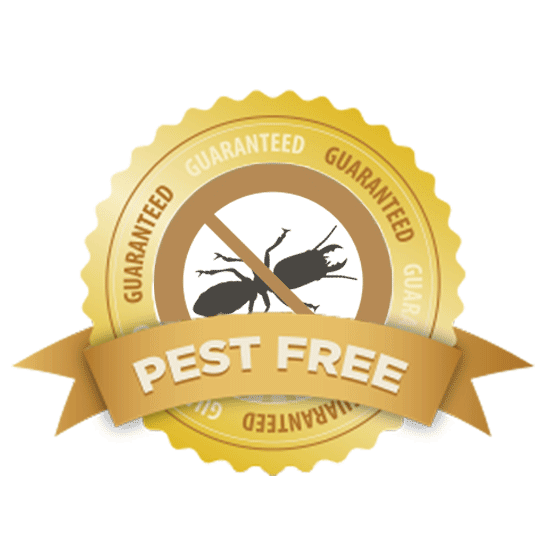Relied On A1 Exterminator Charlotte NC - Comprehensive Pest Solutions
Relied On A1 Exterminator Charlotte NC - Comprehensive Pest Solutions
Blog Article
Bed Insect Treatment Break Down: Comparing Chemical Vs. Non-Chemical Solutions
In the realm of bug control, especially when handling the consistent issue of bed bugs, the choice between chemical and non-chemical therapy options can be a crucial one. Both techniques provide unique benefits and downsides, influencing variables such as efficiency, safety considerations, and total price. By checking out the nuanced information of each technique, a clearer understanding of which path to go after in attending to a bed bug invasion can be achieved.
Performance of Chemical Therapies
Chemical therapies for bed insect problems have been commonly recognized for their rapid and powerful efficacy in removing these bugs. When thinking about the performance of chemical therapies, it is essential to understand that they can offer a fast and detailed solution to a bed pest issue.
In addition, chemical therapies have the benefit of supplying recurring effects, suggesting that they can remain to remove bed bugs also after the preliminary application. This recurring action is especially helpful in combating any type of prospective re-infestations. Additionally, the fast action of chemical therapies can bring relief to people encountering serious bed bug invasions, permitting them to gain back control of their home swiftly.
Safety And Security Worry About Chemical Solutions
One important element that calls for careful consideration when using chemical remedies for bed insect treatment is ensuring the safety of residents and the atmosphere. Direct exposure to specific chemicals made use of in bed bug therapies can lead to breathing issues, skin irritation, or various other negative responses, particularly in individuals with pre-existing conditions or sensitivities.
Moreover, the environmental impact of chemical remedies is another considerable consideration. Some pesticides used in bed insect treatments might be damaging to beneficial bugs, wildlife, and ecological communities if they seep into the soil or water systems. It is necessary to utilize chemical therapies judiciously, following security guidelines, and taking into consideration much less toxic choices to minimize these risks and ensure the safe and efficient monitoring of bed bug problems.
Advantages of Non-Chemical Approaches
Considering the prospective safety concerns and environmental influence associated with chemical services for bed bug therapy, checking out non-chemical strategies offers an encouraging choice with several distinct benefits. Non-chemical therapies are eco pleasant, as they do not contribute to air or water air pollution, making them a sustainable choice for bug control.
In addition, non-chemical options can be efficient in targeting bed bugs, consisting of hard-to-reach locations where chemical therapies may not pass through. Approaches such as warm therapy, vacuuming, steam cleansing, and mattress encasements offer extensive elimination without making use of hazardous chemicals. Additionally, non-chemical approaches can be much less disruptive, calling for very little prep work and enabling quicker reentry into dealt with locations. Overall, choosing non-chemical bed insect therapy techniques not only prioritizes safety and security and ecological defense yet additionally ensures effective and comprehensive parasite control.
Limitations of Non-Chemical Treatments

In addition, non-chemical treatments commonly call for several applications to attain effective elimination. This can be lengthy and may not always ensure full removal of all bed pests and their eggs, particularly in hard-to-reach or covert locations.
In addition, the success of non-chemical treatments heavily depends on correct execution and thoroughness, which can be testing for individuals without specialist know-how. Inadequate application of non-chemical methods might lead to insufficient removal, resulting in relentless invasions and the demand for extra treatments.
As a result, while non-chemical treatments have their advantages, it is essential to recognize these constraints and consider them when figuring out the most effective method for taking care of bed pest problems.
Expense Comparison: Chemical Vs. Non-Chemical Options
Given the limitations linked with non-chemical treatments, a necessary aspect to review in the context of bed insect monitoring is the expense contrast in between chemical and non-chemical alternatives. Chemical treatments generally involve the application of pesticides by professionals, which can vary from $250 to $900 per room, depending upon the intensity of the problem and the size of the location to be dealt with. In contrast, non-chemical therapies like heat treatment or vapor can be here are the findings much more pricey, with expenses ranging from $1,000 to $6,000 for a whole home. While the first expense of chemical treatments may appear reduced, multiple therapies might be required to completely remove the infestation, potentially Visit Website raising the overall cost. On the various other hand, non-chemical alternatives might supply an extra green and sustainable remedy, although they can be cost-prohibitive for some individuals. Ultimately, when taking into consideration the expense of bed bug treatment choices, it is crucial to evaluate the ahead of time costs against the performance and long-lasting sustainability of the selected approach.
Conclusion

Taking into consideration the potential safety and security worries and environmental influence connected with chemical services for bed bug treatment, discovering non-chemical methods provides an encouraging option with several distinctive benefits.Provided the constraints connected with non-chemical treatments, a necessary you can look here facet to examine in the context of bed bug monitoring is the cost contrast between chemical and non-chemical options. In contrast, non-chemical therapies like warmth therapy or steam can be a lot more costly, with costs varying from $1,000 to $6,000 for a whole home. While the initial price of chemical treatments might seem lower, several treatments may be needed to fully eradicate the problem, potentially increasing the overall cost.In conclusion, when comparing chemical and non-chemical bed bug treatment choices, it is crucial to take into consideration performance, security, benefits, restrictions, and cost.
Report this page